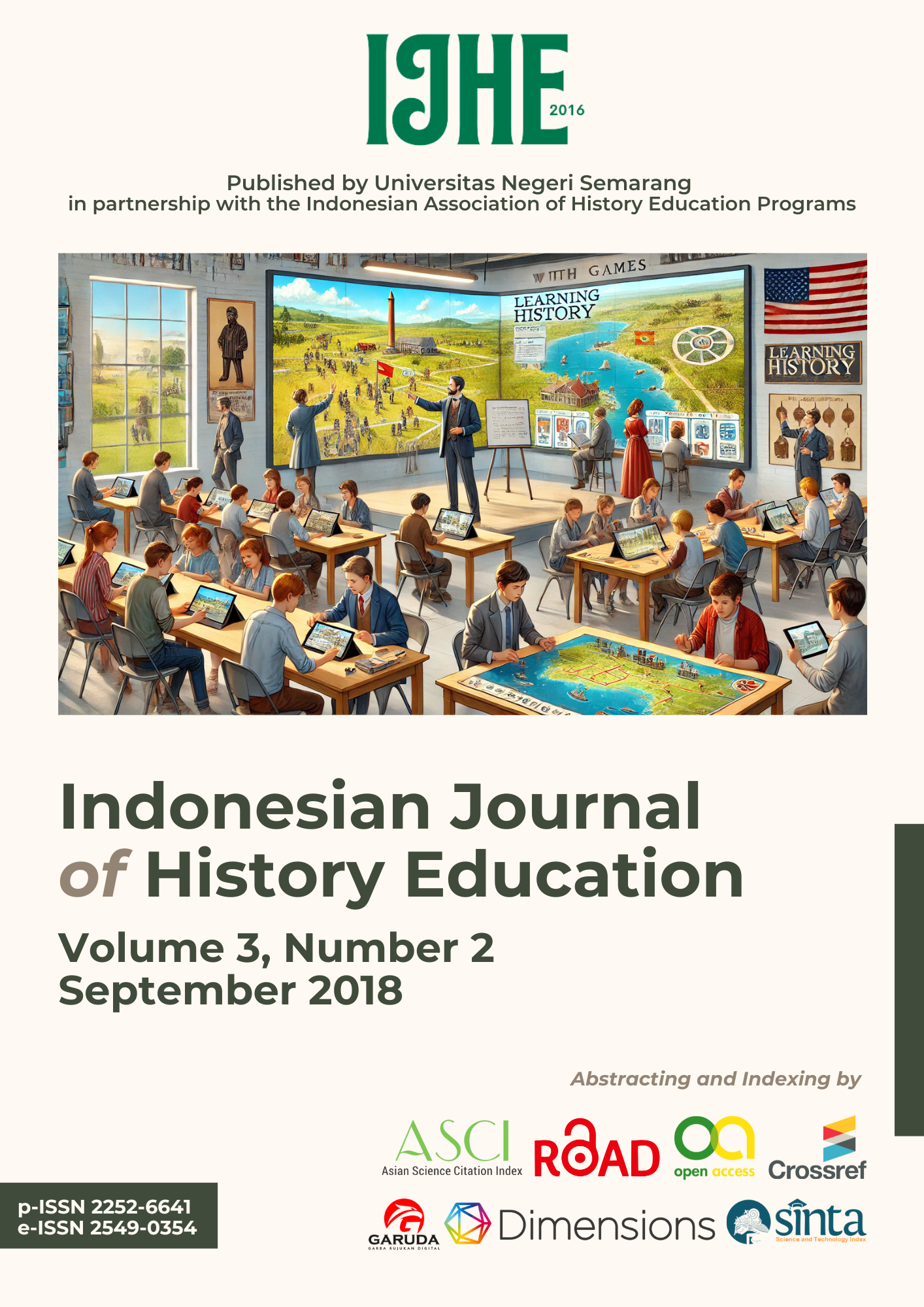The Use of the Isdiman Ambarawa Museum as a Learning Resource
Abstract
This study aims to prove the existence of differences in student interest between classes that utilize the Isdiman Museum Ambarawa as a learning resource and those that do not. This research employs a quantitative approach with an experimental design to assess these differences. The population targeted in this study consists of eleventh-grade students at a high school in Ambarawa. The samples for this study were selected using a simple random sampling technique, adhering to a pretest-posttest control group design. Specifically, the sample includes eleventh-grade students from the social sciences track, with one group as the control class and another as the experimental class. The control class did not use the Isdiman Museum Ambarawa as a learning resource, while the experimental class integrated visits and activities at the museum into their curriculum. The objective is to measure any significant variations in student interest and engagement between these two groups, thus providing insights into the effectiveness of incorporating museum resources into traditional educational settings.
References
Ahmad, T. A. (2010). Strategi pemanfaatan museum sebagai media pembelajaran pada materi zaman prasejarah. Paramita: Historical Studies Journal, 20(1).
Arikunto, S. (2010). Prosedur Penelitian: Suatu Pendekatan Praktik. PT. Rineka Cipta.
Hadi, S. (2015). Sejarah dan keberadaan Museum Isdiman di Kompleks Monumen Palagan Ambarawa. Jurnal Sejarah dan Budaya, 22(1), 45-58.
Hamalik, O. (2009). Proses Belajar Mengajar. Bumi Aksara.
Kartodirdjo, S. (2014). Metodologi Sejarah. Penerbit Universitas Indonesia (UI-Press).
Kuntowijoyo. (2013). Pengantar Ilmu Sejarah. Tiara Wacana.
Prasetyo, A. (2013). Koleksi Bersejarah di Museum Isdiman. Penerbit Gramedia.
Prasetyo, B. (2014). Pemanfaatan sumber sejarah sebagai media pembelajaran. Dalam Buku Pendidikan Sejarah (hlm. xx-xx). Penerbit Andi.
Purwanto, N. (2011). Prinsip-prinsip dan Teknik Evaluasi Pengajaran. Remaja Rosdakarya.
Rahayu, N. (2015). Peran peninggalan sejarah dalam pembelajaran sejarah di sekolah. Jurnal Pendidikan Sejarah Indonesia, 10(1), 45-59.
Sanjaya, W. (2013). Strategi Pembelajaran Berorientasi Standar Proses Pendidikan. Kencana Prenada Media Group.
Sardiman, A. M. (2011). Interaksi & Motivasi Belajar Mengajar. Rajawali Pers.
Slameto. (2010). Belajar dan Faktor-faktor yang Mempengaruhinya. Rineka Cipta.
Sugiyono. (2016). Metode Penelitian Kuantitatif, Kualitatif, dan R&D. Alfabeta.
Sudjana, N. (2011). Penilaian Hasil Proses Belajar Mengajar. PT Remaja Rosdakarya.
Sukmadinata, N. S. (2007). Pengembangan Kurikulum Teori dan Praktek. PT Remaja Rosdakarya.
Supardi, A. (2015). Pendidikan Sejarah: Pendekatan dan Metodologi. Penerbit Gramedia.
Suryadi, H. (2016). Metode Pembelajaran Sejarah di Sekolah Menengah. Pustaka Setia.
Suryana, A. (2013). Jejak sejarah dan visualisasi peristiwa dalam pendidikan sejarah. Jurnal Ilmu Pendidikan, 9(2), 123-135.
Warsita, B. (2003). Teknologi Pembelajaran, Landasan & Aplikasinya. Rineka Cipta.
Wijaya, A. (2016). Sejarah Kedaerahan dalam Pendidikan Nasional. Gelora Aksara.
Winarno, W. W. (2011). Analisis Statistika: Deskriptif, Inferensial, dan Nonparametrik. UPP STIM YKPN.
Wulandari, D. (2016). Museum dan Monumen Perjuangan di Indonesia: Studi Kasus Museum Isdiman. Penerbit Mizan.
Yusuf, M. (2014). Sejarah Nasional dan Lokal: Tantangan dalam Pendidikan. Penerbit Andi.
Copyright Notice
An author who publishes in the Jurnal Indonesian Journal of History Education agrees to the following terms:
- Author retains the copyright and grants the journal the right of first publication of the work simultaneously licensed under the Creative Commons Attribution-ShareAlike 4.0 License that allows others to share the work with an acknowledgement of the work's authorship and initial publication in this journal
- Author is able to enter into separate, additional contractual arrangements for the non-exclusive distribution of the journal's published version of the work (e.g., post it to an institutional repository or publish it in a book) with the acknowledgement of its initial publication in this journal.
- Author is permitted and encouraged to post his/her work online (e.g., in institutional repositories or on their website) prior to and during the submission process, as it can lead to productive exchanges, as well as earlier and greater citation of the published work (See The Effect of Open Access).
Read more about the Creative Commons Attribution-ShareAlike 4.0 Licence here: https://creativecommons.org/licenses/by-sa/4.0/.




